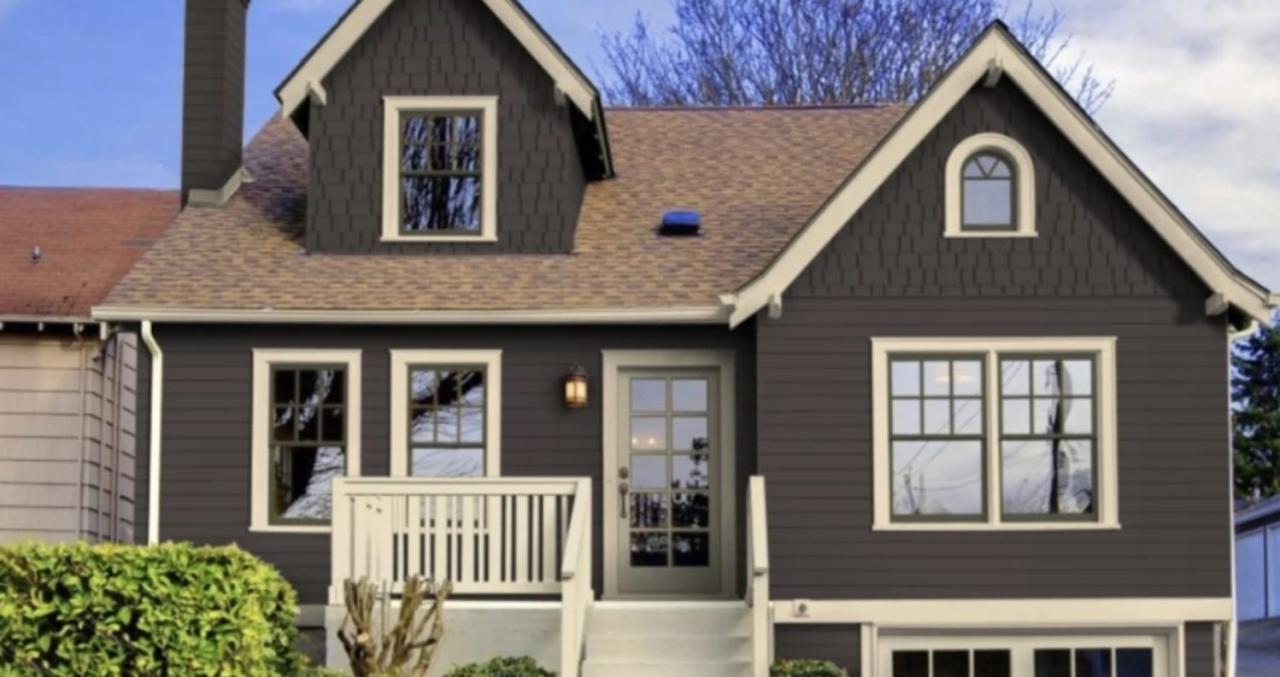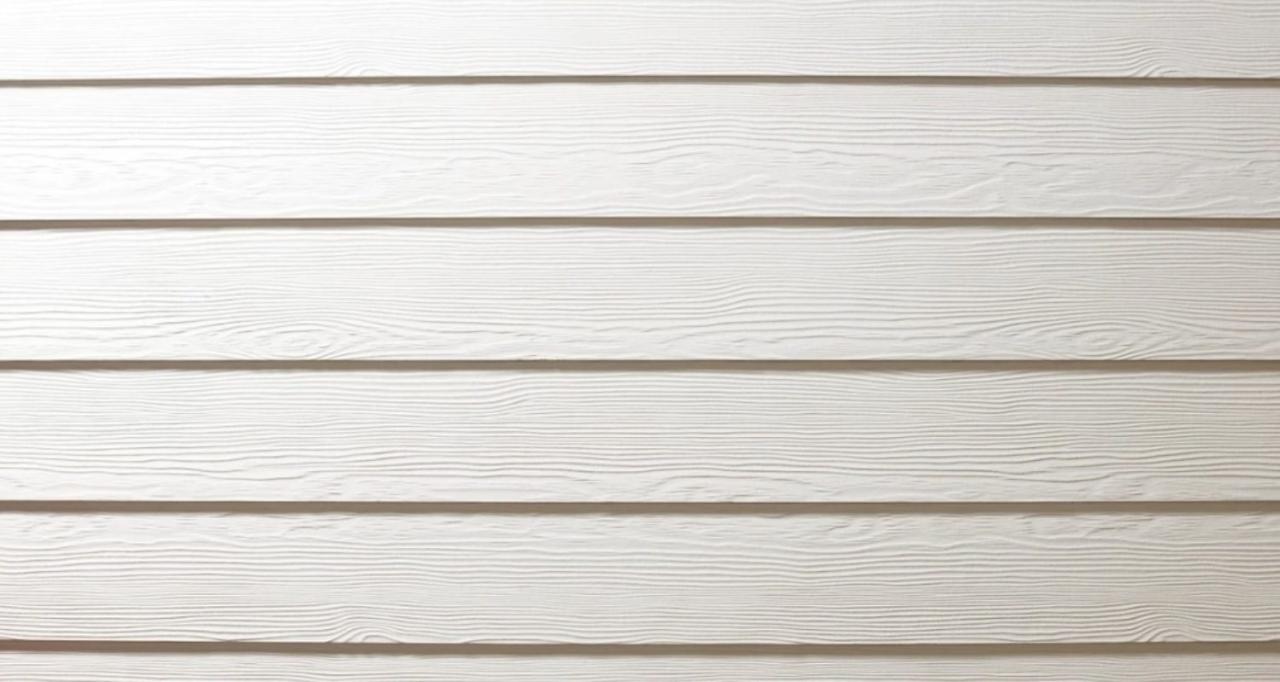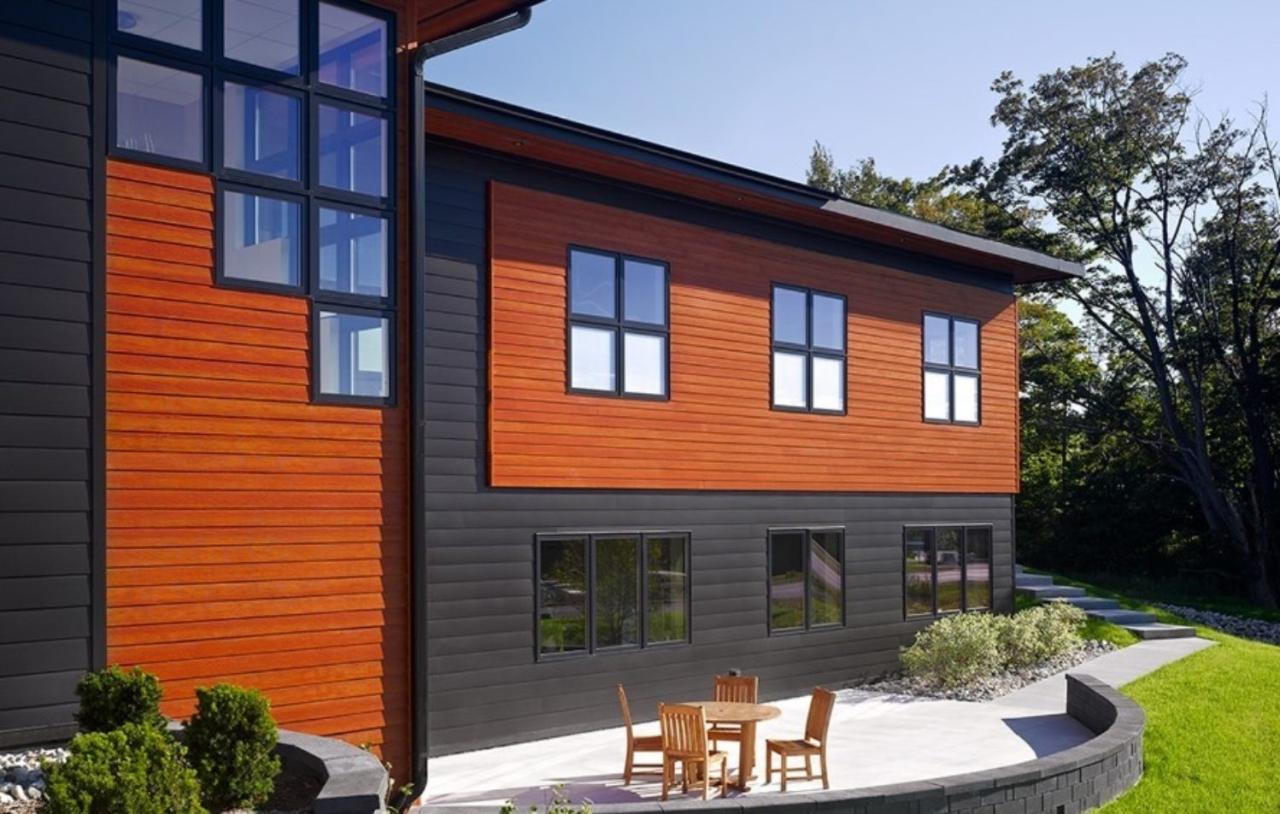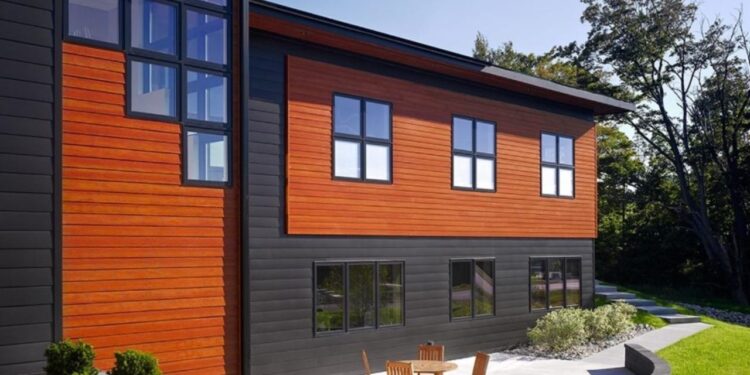As Noise-Reducing Siding for Homes Near Traffic Zones takes center stage, this guide beckons readers into a world of innovative solutions to minimize noise pollution in residential areas close to busy roads. From exploring various materials to understanding installation processes, this guide covers it all to help homeowners make informed decisions for a quieter living environment.
The following sections delve into different aspects of noise-reducing siding, offering insights and practical tips for those seeking to enhance their homes near high-traffic zones.
Noise-Reducing Siding Options
When it comes to reducing noise from traffic in homes, there are several siding options available that can help minimize sound transmission. These noise-reducing siding materials are designed to absorb or block the sound waves coming from outside, providing a quieter indoor environment for residents.
Vinyl Siding
Vinyl siding is a popular choice for noise reduction due to its thickness and ability to dampen sound vibrations. It is an affordable option that can effectively reduce the amount of noise entering a home from outside. Additionally, vinyl siding is low-maintenance and comes in a variety of colors and styles to suit different aesthetic preferences.
Fiber Cement Siding
Fiber cement siding is another excellent choice for noise reduction, as it is a dense material that can effectively block sound waves from traffic. This type of siding is also resistant to pests, fire, and rot, making it a durable and long-lasting option for homes near busy roadways.
Wood Siding
Wood siding, particularly cedar and redwood, is known for its natural ability to absorb sound waves, making it a good choice for noise reduction. Wood siding provides a traditional and rustic look to homes while also offering soundproofing benefits. However, regular maintenance is required to prevent rot and decay.
Composite Siding
Composite siding combines various materials like wood fibers and recycled plastics to create a durable and noise-reducing option for homes near traffic zones. This type of siding is resistant to moisture, insects, and rot, making it a low-maintenance choice for homeowners looking to reduce noise levels indoors.
Metal Siding
Metal siding, such as steel or aluminum, is a sturdy option for noise reduction that can effectively block sound waves from traffic. While metal siding is durable and long-lasting, it may not provide as much insulation against noise compared to other materials.
However, it is a low-maintenance choice for homeowners seeking a modern and sleek exterior look.
Installation Process
When it comes to installing noise-reducing siding for homes near traffic zones, it's essential to follow a step-by-step guide to ensure proper installation and maximum effectiveness in reducing noise pollution. Here is a detailed guide on how to install noise-reducing siding along with tips to make the process more efficient.
Gather the Necessary Tools and Materials
Before starting the installation process, make sure you have all the required tools and materials handy. This may include:
- Noise-reducing siding panels
- Tape measure
- Level
- Screws or nails
- Hammer or screwdriver
- Caulk and caulking gun
Prepare the Surface
Before installing the siding, ensure that the surface of the wall is clean, dry, and free of any debris. Use a level to check if the surface is even to avoid any misalignment during installation.
Install the Siding Panels
Start by measuring and cutting the siding panels to fit the dimensions of the wall. Attach the panels to the wall using screws or nails, making sure they are securely fastened. Use a level to ensure that the panels are straight and aligned correctly.
Seal the Gaps
Once the siding panels are installed, use caulk to seal any gaps between the panels and around windows or doors. This will help prevent noise from seeping through any openings and ensure the effectiveness of the noise-reducing siding.
Maintain the Siding
Regularly inspect the siding for any signs of damage or wear and tear. Replace any damaged panels or reseal any gaps to maintain the effectiveness of the noise-reducing siding over time.By following these steps and tips, you can successfully install noise-reducing siding for homes near traffic zones and enjoy a quieter and more peaceful living environment.
Maintenance and Durability

When it comes to noise-reducing siding in high-traffic areas, proper maintenance is essential to ensure longevity and effectiveness. Regular upkeep can also help in preserving the appearance of the siding over time.
Maintenance Requirements
For noise-reducing siding, regular cleaning is crucial to prevent dirt and debris from building up and affecting the soundproofing properties
Inspect the siding periodically for any signs of damage, such as cracks or loose panels, and repair them promptly to prevent further issues. Additionally, consider applying a protective sealant to enhance the durability of the siding and improve its resistance to environmental factors.
Durability of Siding Materials
Various noise-reducing siding materials offer different levels of durability and resistance to environmental factors. Vinyl siding is known for its low maintenance requirements and resistance to moisture, making it a durable option for high-traffic areas. Fiber cement siding is another sturdy choice that can withstand harsh weather conditions and is resistant to pests and rot.
On the other hand, wood siding, while aesthetically pleasing, may require more maintenance to prevent warping, rotting, and insect infestations. Metal siding, such as aluminum or steel, is highly durable and can withstand extreme weather conditions, but it may be prone to dents and scratches over time.
Recommendations for Extending Lifespan
- Regularly clean the siding to remove dirt and debris.
- Inspect the siding for damage and make repairs as needed.
- Apply a protective sealant to enhance durability.
- Avoid using harsh chemicals or abrasive materials that can damage the siding.
- Consider investing in quality materials that are known for their durability and longevity.
Cost Considerations

When it comes to installing noise-reducing siding for homes near traffic zones, there are several cost factors to consider. The initial investment and long-term savings of different noise-reducing siding options play a significant role in determining whether the cost is justified by the benefits it provides.
Cost Factors
- The cost of the noise-reducing siding material itself, which can vary depending on the type of material chosen (e.g., vinyl, fiber cement, wood).
- Labor costs for installation, including any additional work needed to prepare the surface or address existing issues.
- Additional expenses such as permits, equipment rentals, and disposal of old siding materials.
- Potential long-term savings on energy bills due to improved insulation properties of noise-reducing siding.
Comparison of Initial Investment and Long-Term Savings
- Noise-reducing siding options with higher initial costs may result in greater long-term savings due to improved energy efficiency and durability.
- Consider the payback period for each type of siding to determine whether the initial investment is worth the potential savings over time.
- Factors such as maintenance requirements and lifespan should also be taken into account when comparing costs and benefits.
Justification of Cost vs. Benefits
While noise-reducing siding may come at a higher initial cost compared to traditional siding options, the benefits it provides in terms of sound insulation, energy efficiency, and overall comfort can justify the investment in the long run.
Ultimate Conclusion

In conclusion, Noise-Reducing Siding for Homes Near Traffic Zones presents a viable solution for homeowners looking to create a more peaceful living space amidst urban commotion. By choosing the right materials, understanding installation techniques, and prioritizing maintenance, residents can enjoy the benefits of reduced noise levels and increased comfort within their homes.
Top FAQs
What are the different types of noise-reducing siding materials available?
Common noise-reducing siding materials include vinyl, fiber cement, and metal options, each offering unique benefits in reducing sound transmission.
What maintenance is required for noise-reducing siding in high-traffic areas?
Regular cleaning to remove dirt and debris, inspections for any damage, and prompt repairs are essential for maintaining the effectiveness of noise-reducing siding near traffic zones.
How do cost factors vary among different noise-reducing siding options?
The initial cost of noise-reducing siding materials may vary, but long-term savings in reduced noise disturbance and potential energy efficiency gains can justify the investment over time.









